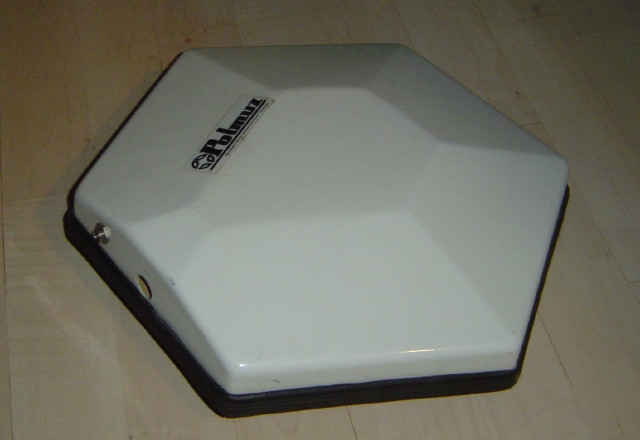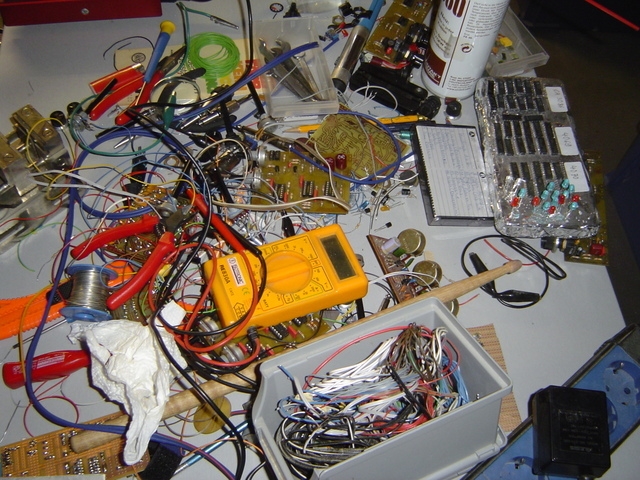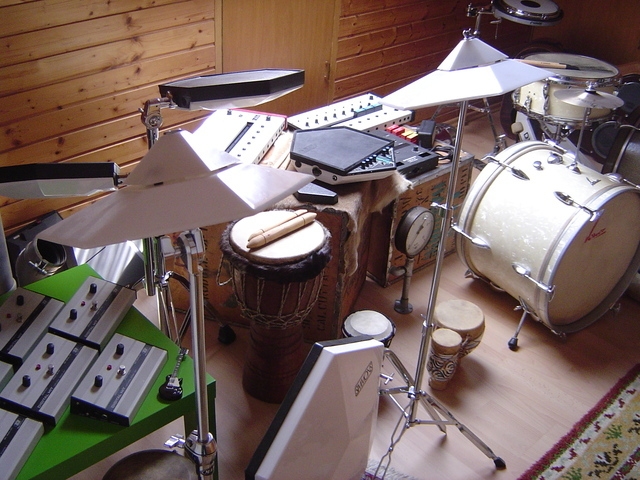Have you noticed that the playing surfaces of most SDS9 pads sunk into the pad? The reason is simple. The SDS9 pads (Mark IV) had so called floating playing surfaces. This means the outer rubber was stuck to the edge and a thin piece of wood was glued on the bottom side without any contact to the edge. So this wooden plate was fixed only by some glue and the tension of the rubber. But over the years this rubber material becomes streched by it’s own weight with the result of a sagging surface. This phenomenon already happens if you keep your kit set up over a long period like a couple of years. The worst thing you can do is to pile your pads one upon the other because the weight affecting the rubber is even multiplied. So what is the best way to store your pads over a long time?
- If you have enough space, lay them down on a plane ground with the playing surface to the bottom.
- If you don’t have enough space: Put the pads vertically one next to the other:

How about other Simmons pads?
The SDX pads react similarly, although they don’t have this “floating playing surface”, but in this case the grey rubber will even completely come of if you store them with the rubber surface to the bottom (which is ok for the Mark IV pads). It is very important that this does not happen because otherwise the FSR foil will oxidate faster. So the best ways to store SDX pads are
- If you have enough space, lay them down on a plane ground with the playing surface to the top.
- If you don’t have enough space: Put the pads vertically one next to the other
Mark IV and SDX are the critical pads. The SDSV pads really don’t care how you store them. They are tough enough to pile even up to 10 pads one upon the other

The same with SDS8 and early SDS7 (Mark III) pads though it’s not that easy to pile those because of the unfortunate position of the screws.
Hopefully these words help to keep some more pads in a good shape over the next years, Good night….

















